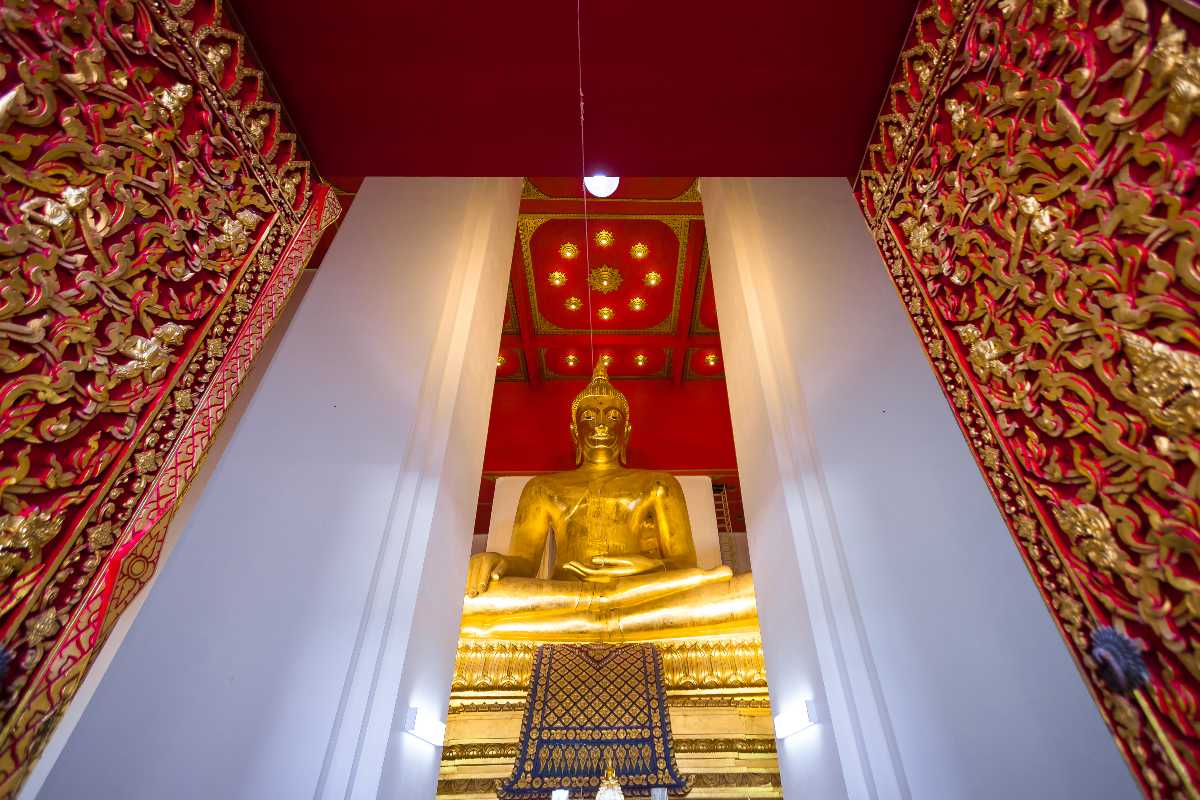Wihan Phra Mongkhon Bophit
Tags : Buddhist Temple
Timings : 8:00 AM - 4:30 PM
Time Required : Less than 1 hour
Entry Fee : No Entry Fee
Wihan Phra Mongkhon Bophit, Ayutthaya Overview
Nestled in the historical park of Ayutthaya close to the Grand Palace, Wihan Phra Mongkhon Bophit is a temple compound that magnetizes hordes of visitors with a compelling historical statue. It is famous for encompassing one of the biggest Buddha statues in Thailand and the oldest Buddha statue in Ayutthaya city - a 17-metre tall bronze gilded statue, said to be carved by the King Chairachathirat himself, after the death of his son. Legend has it that once the statue was moved from its original location to its current place, a bolt of lightning struck it and its head once fell off.
The Buddha idol at Wihan Phra Mongkhon Bophit touches a height of 12.45 meters and is constructed of brick at the core and then coated in bronze. The statue sits in a subdued mara position and is hemmed in by a mondop which is a squared roof structure. The Buddha is known as the Phra Mongkhon Bophit, and the temple is famous after his name. It has also undergone several restorations after being sacked by the Burmese Army. In celebration of the 60th birthday of H.M. Queen Sirikit in 1992, the statue of Phra Mongkhon Bophit was embellished with gold leaf by the Mongkhon Bophit Foundation which is featured on the statue even today.
Read More on Wihan Phra Mongkhon Bophit
Tips
-
You will find many souvenir shops in the temple complex, in case you plan to buy anything.
-
The street stalls nearby offer tasteful local dishes to satiate your hunger.
-
Watch out for pickpockets, there is even a warning board to alert you.
Dress Code

Asian heritages and temples follow a very strict dress code out of religious respect. Always keep in mind to wear long pants and skirts to cover the area below your knee to ankle. Avoid off-shoulders, bare shoulders are a big no for both men and women. Shoes must be removed outside the temple.
History of Wihan Phra Mongkhon Bophit

The Lord Buddha idol at Wihan Phra Mongkhon Bophit was chiselled into a fine statue in 1538 under the reign of King Chairacha. A research study states that the image of the Buddha may have been first prepared during the ruling period of King Borom Trailokyanath as the structure flaunts traces of Sukhothai influence - an art that was well celebrated back then.
The mandap pavilion was constructed after a lightning incident that hit the statue during the reign of King Songtham where the statue was damaged in some areas. The image was then transferred to a westward position and a mandap was built to shield it from any such accidents. Later on, the open space in front of the mandapa was called Sanam Na Chakkrawat and it was started to be used as a ground for royal cremation ceremonies.
How To Reach Wihan Phra Mongkhon Bophit
-
By Walk - One can easily walk from Wat Phra Ram and Wangchang Lae Phanait. The shrine is located just outside the Grand Palace, adjacent to Wat Phra Si Sanphet in the historical park of Ayutthaya.
-
By Cab - The most convenient way of reaching the place is by hiring a taxi.
